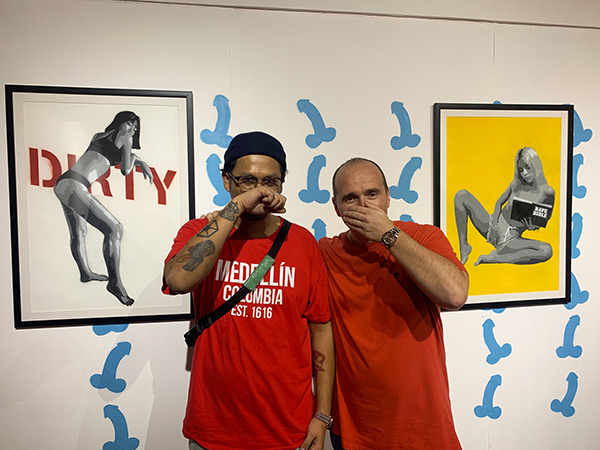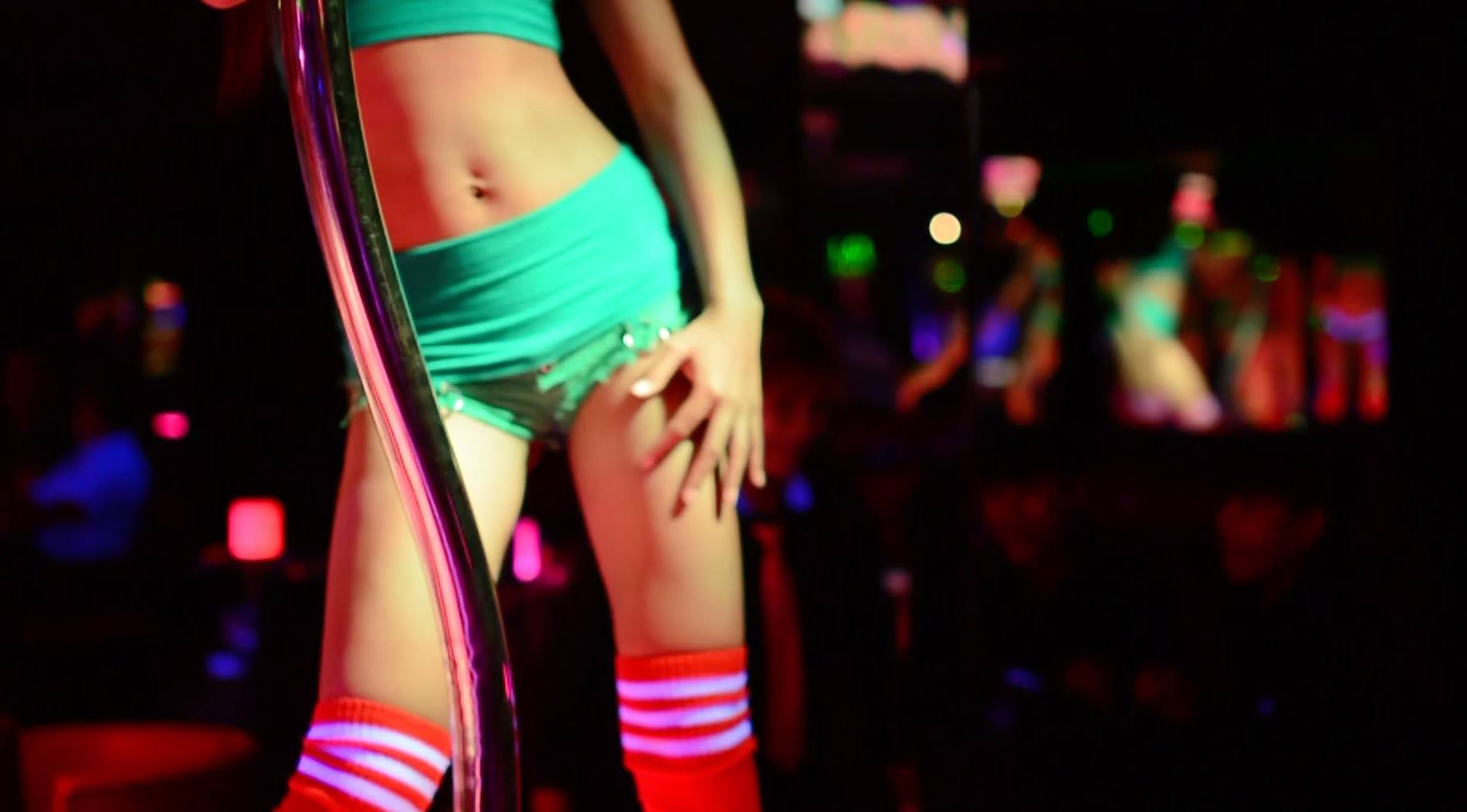Above: A Patpong go-go dancer. Photo: Manek Haddock / Wikimedia CCA 4.0
Upstairs from the kink and flesh play of the Barbar Fetish Club, a small crowd gathered recently for a show very different from the usual bouncing, bored women or feats of genital dexterity found in Patpong.
Christ, his apostles, and a last supper of booze, bongs and crack pipes sat alongside a pile of discarded Barbie dolls – a transgressive artist of the moment’s commentary on misogyny and sex-as-commodity. In other words, a big departure for a red-light district that’s gorged on that very formula for decades.
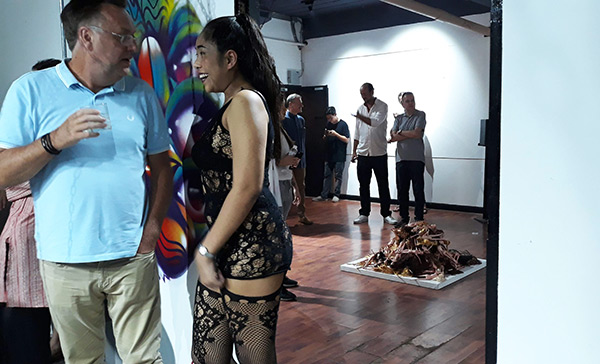
Yet if the owners of that and other Patpong sex venues have their way, the Sex, Drugs & Headache Stencil show – which two months back opened the Candle Light Studio gallery – will be a critical step toward remaking Patpong into a hip cultural destination instead of creepy relic to be avoided.
“The market has changed and the visitors have changed with the times as well. The go-go bar isn’t really interesting anymore to the general crowd,” said Michael Messner, whose entertainment group’s been in business there for two decades and owns several venues.
“And the younger generations, the 20- and 30-year-olds, male and female, they like to go out together. There’s more couples and groups. That changes what they want to see.”
On Friday, Candle Light will open a rare collection of works by Swiss biomechanical fantasist H.R. Giger, British occult icon Aleister Crowley, Vienna-born surrealist Daniel Friedemann, erotic Japanese sculptor Shibari Netsuke, and more.
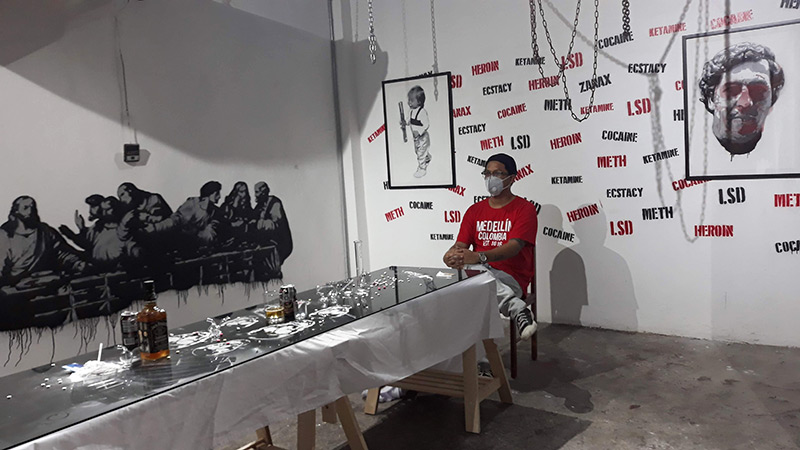
‘Going down’
It’s not a bold statement to say that Patpong has come across more desperate than fun for a long time, well before #MeToo convinced more people to err on the side of “maybe this isn’t OK.”
“The sex industry business is going down,” said Candle Light manager Romain Guoit, a former partner at kink-fetish-gonzo arts venue Maison Close.

The era romanticized by Bernard Trink-reading, white male “Nite Owls” is over, and memories are fading of what drew people to Patpong in the first place.
The Legendary Lechery of Bernard ‘Nite Owl’ Trink
But if there’s any city that can carve out sex-positive spaces palatable to today’s audiences, it’s Bangkok.
It’s a dilemma Messner and Guiot want to solve – and they see a path forward.
Guiot said market forces are already changing the neighborhood. He notes the expansion of such LGBT-oriented venues as Dreamboy Paradiso, which attracts young crowds as nearby soi 4 goes overcapacity on the strength of draws like the drag queens at The Stranger Bar.
“Now it’s a mix of genders. Gay, trans, straight people – everyone can party together around the arts. The club owners are very interested. Everyone is interested,” said Guiot, 32.

Decades of Sex
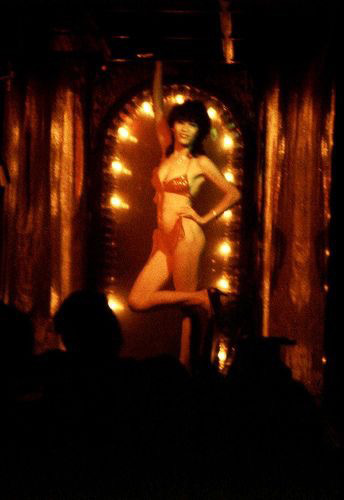
The two sois were on their way to becoming an international crossroads almost as soon as the Patpongpanich family acquired the land in the mid-1940s. Swank hotels and lounges were followed by corporate offices for airlines and multinationals such as IBM and Shell Oil. It was packed with top-class venues when American GIs fighting in Vietnam began pouring in, fueling the gradual takeover of bars and go-go joints that flourished into the ‘90s.
It’s been a downward spiral since. Demographics changed, predatory scams proliferated, and curious tourists opted for Soi Cowboy instead, abandoning Patpong to the die-hards.
To chart a new course, the venue owners want to bring in street art, murals, galleries and a museum to preserve the half century-and-counting history of Bangkok’s oldest red-light district. At least in the half they hold sway in – Soi Patpong 2 – which seven decades later still remains in the hands of the Patpongpanich family.
It’s a vision they’ve made halting progress to realize. Some years back, they successfully remade another venue they own, Black Pagoda, into a nightclub where cool promoters and DJs wanted to bring music and audiences to party, all enlivened with a backdrop of sleaze.
“As Bangkok has been evolving over the past five years into something more sophisticated, we see that art and culture, and some of the underground art and culture, is something that provides business for us,” said Messner, whose group owns Barbar, Candle Light, The Strip, Black Pagoda and Club Black.
Go clubbing in a brothel at ‘Black Pagoda’

Most of that demographic has moved on to Soi Cowboy or Nana Plaza, Guiot said.
And with a radical transformation of Rama IV Road in the works, now is the time to lay the groundwork, he added, before market forces prevail and the go-go bars are all replaced by quinoa bars.
It’s a history they don’t want to erase. Thus the Patpong Museum slated to open later this year downstairs from Black Pagoda.
The storehouse of artifacts will cover Patpong’s origin story – from the early 20th century to now – through historical objects including old signs, video exhibitions, virtual reality recreations and more. Both Messner and Guiot are keen to include information about how CIA spooks waging a secret war in Laos operated upstairs from the American GIs letting loose in the soi.
The sex-positive character coded into Patpong’s sois can have a place in the New Bangkok taking shape, Messner believes.
“The hipster, cosmopolitan move that’s happening in certain parts is its own ecosystem that exists alongside others,” he said. “This is very sexual society, and because of the freedom this society provides, sex is around us and there will be sex in Patpong in every little street.”
“It’s part of the identity. Patpong is a red-light district. Has been that for 40 years,” he added. “Until that’s washed out of its DNA, I think another 40 years have to pass, and even then they’d have to tear it down and rebuild it.”
